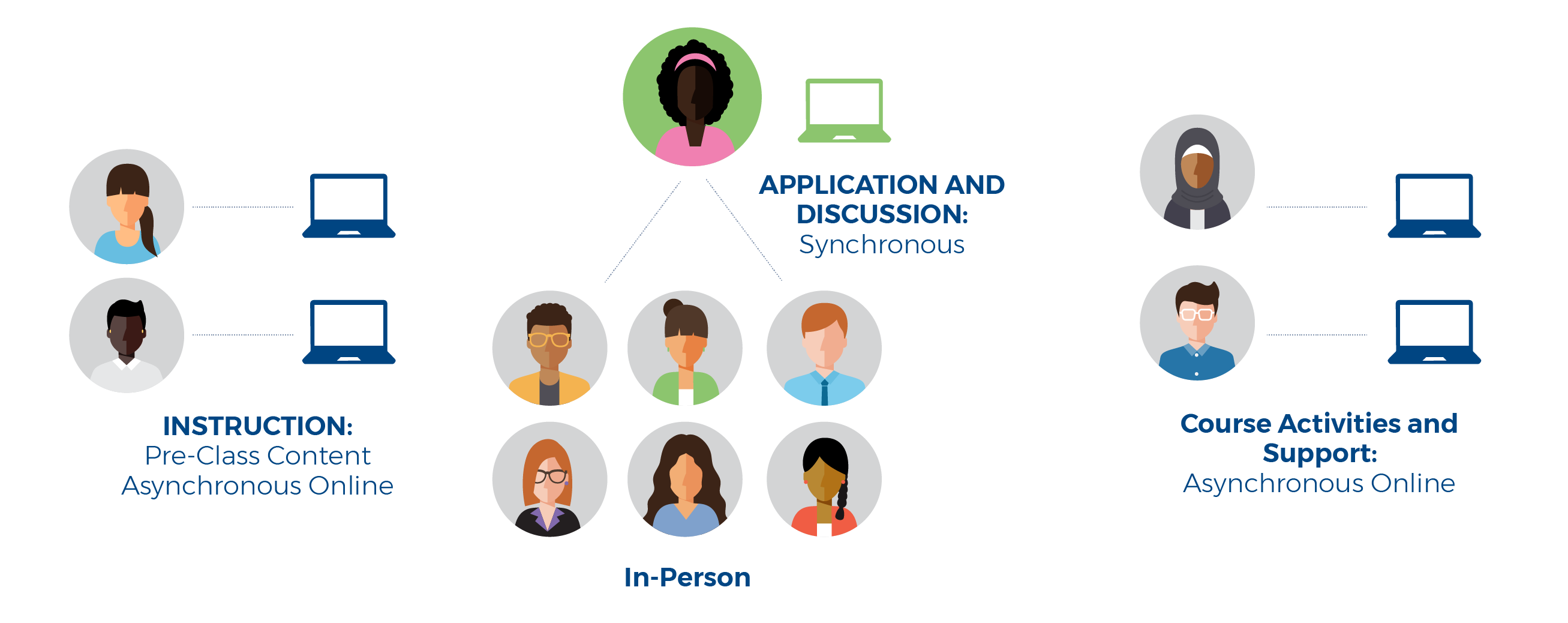Flipped Teaching Strategies
A flipped instructional model is one in which the learning materials are provided in advance of a face-to-face class meeting. In essence, “flipping the classroom” means that students gain first exposure to new material outside of class and then use class time to do the harder work of assimilating that knowledge, perhaps through problem-solving, discussion, or debates. Instruction in a flipped classroom can be very engaging and dynamic.
Begin by redefining roles. Have a conversation with your students to discuss the design format of the course, their role in the space, and why this type of teaching and learning matters.
Address students’ fears. For some students, being actively engaged in the classroom is risky and scary. Try to address these fears and create a learning environment that is “safe” for sharing ideas, collaborating with others and taking risks. Help students become comfortable with ambiguity. They don’t have to know all of the right answers all of the time, and that’s okay.
Create value. How do you know if students actually did the pre-class work if you don’t have a way to measure it? One way to think about this challenge is to ask yourself, “What is the result of the pre-class work?” Have students demonstrate their learning of the core material. Have them outline the chapter, draw a mind map of the concepts, or answer the questions at the end of the chapter. When students see how their pre-class work is valued and how it is used in class, they will be more likely to come to class prepared and ready to participate.
Use focusing activities. A focusing activity is intended to direct students’ attention the minute they walk in (or log in) to class. Focusing activities need to be interesting, prompt their thinking about the course material, and encourage engagement immediately. Focusing activities can help you establish routines of engagement in your class. When students realize that every class period begins with an activity that requires them recall and use their pre-class work, they begin to take seriously their responsibility to be prepared.
Make connections. Students may not do the pre-class work because they might feel as though they are on their own without support from their instructor or from their peers. They might lack confidence in their level of understanding and not know where to look for help. Build support systems. Offer live chat “office” hours in the evenings to answer questions. Online study groups, with a private discussion forum, or an FAQ section on Blackboard, can be helpful resources.
Suggested Online Course (via LinkedIn Learning): Flipping the Classroom



